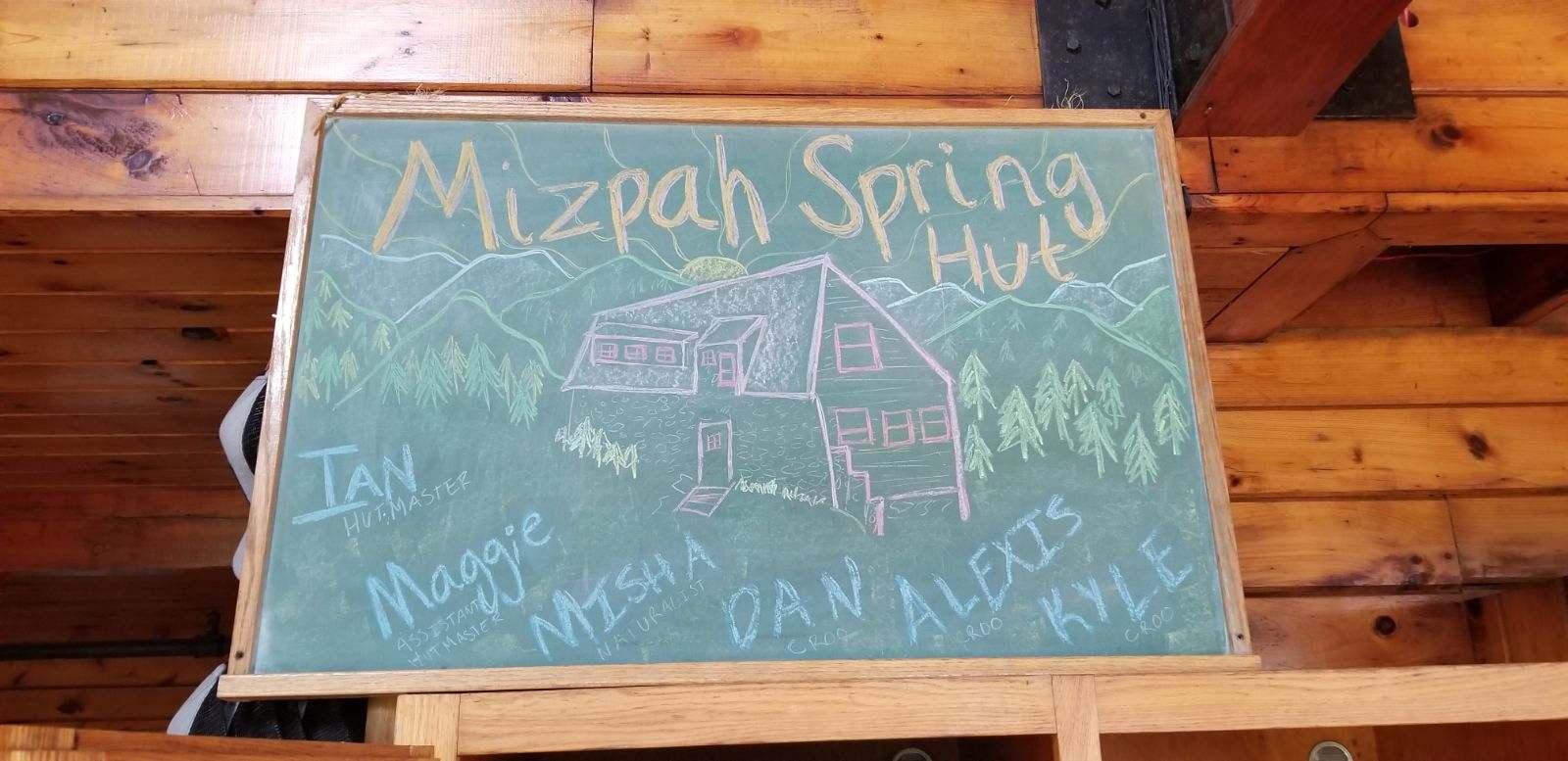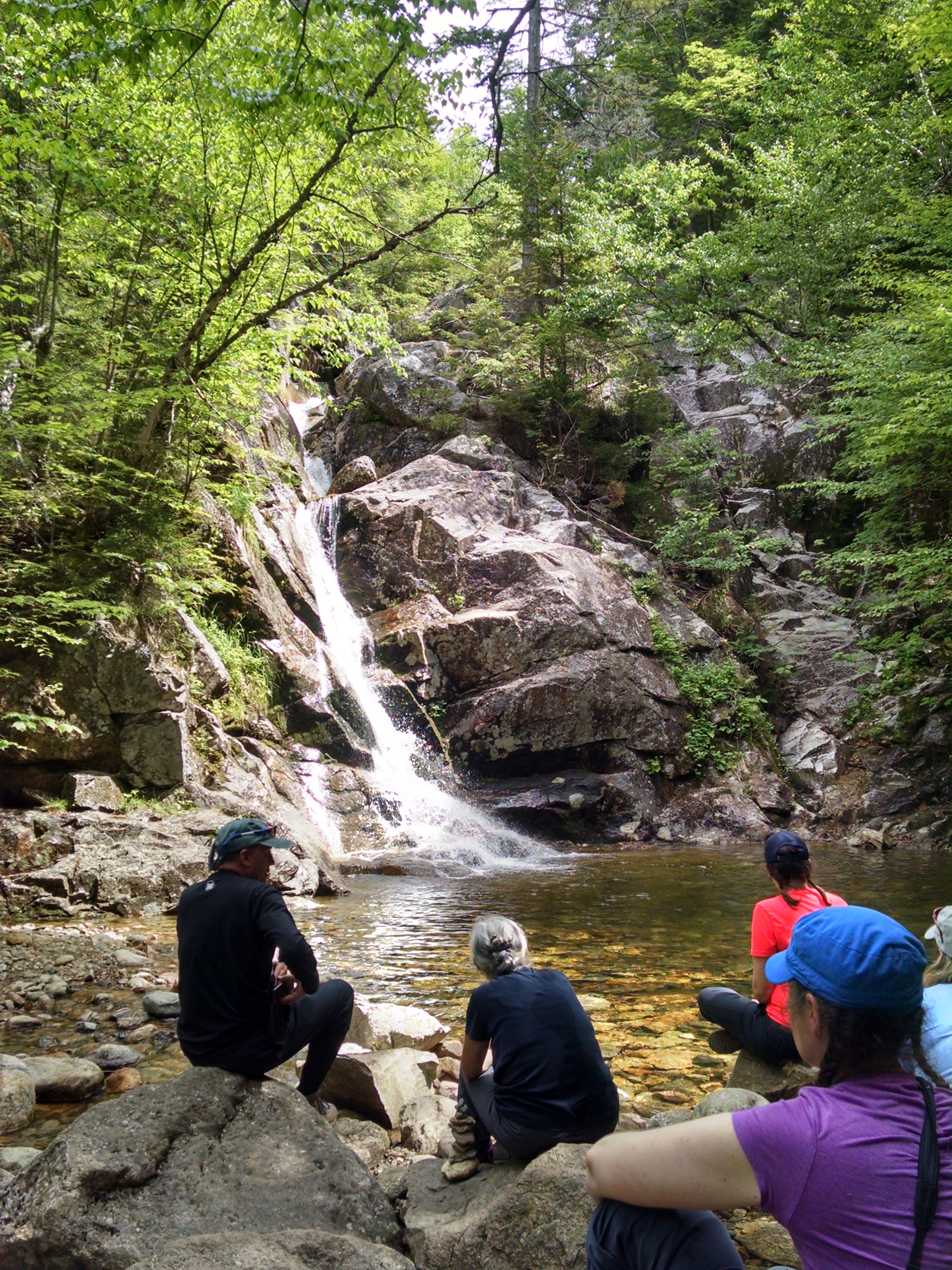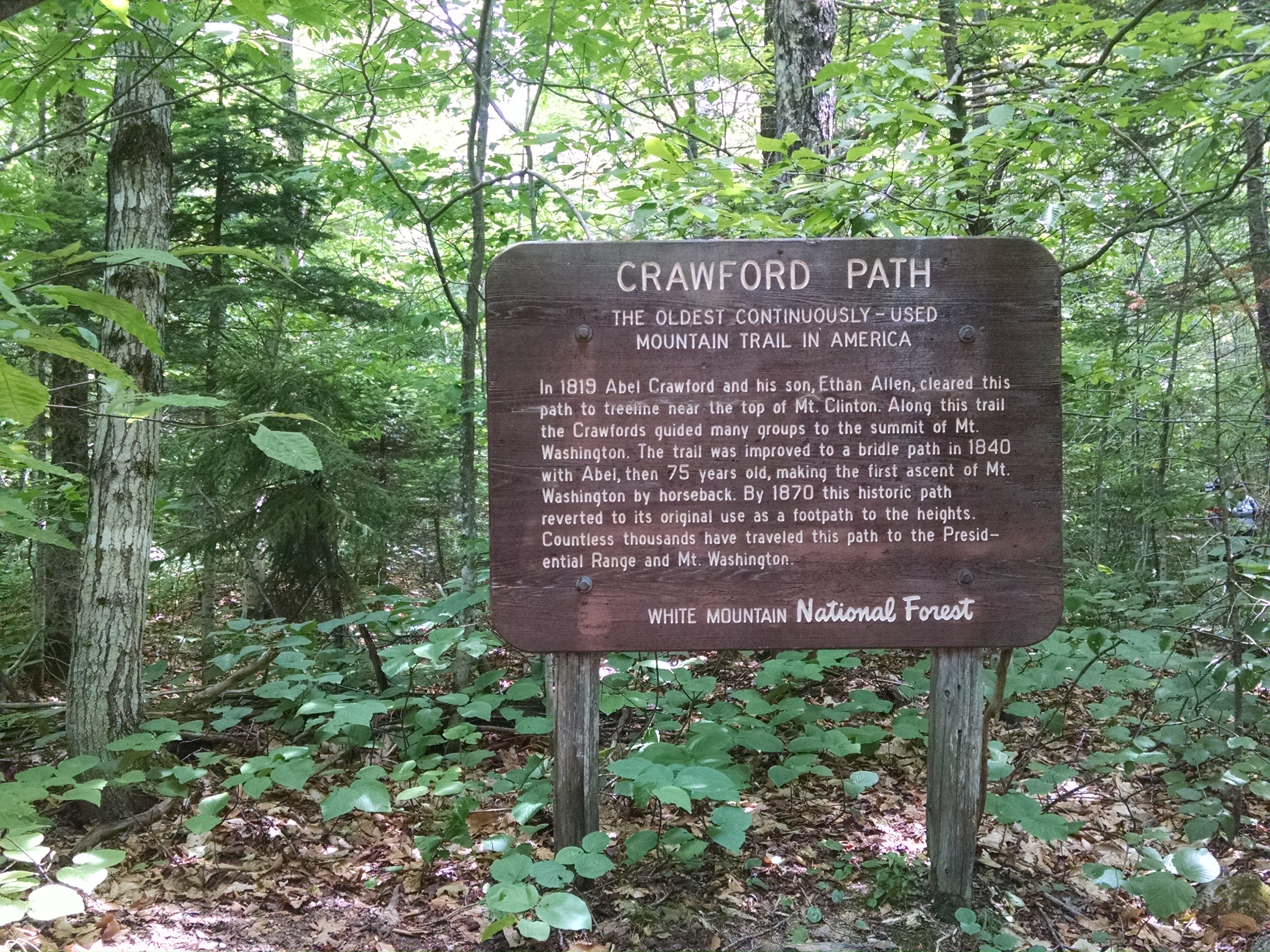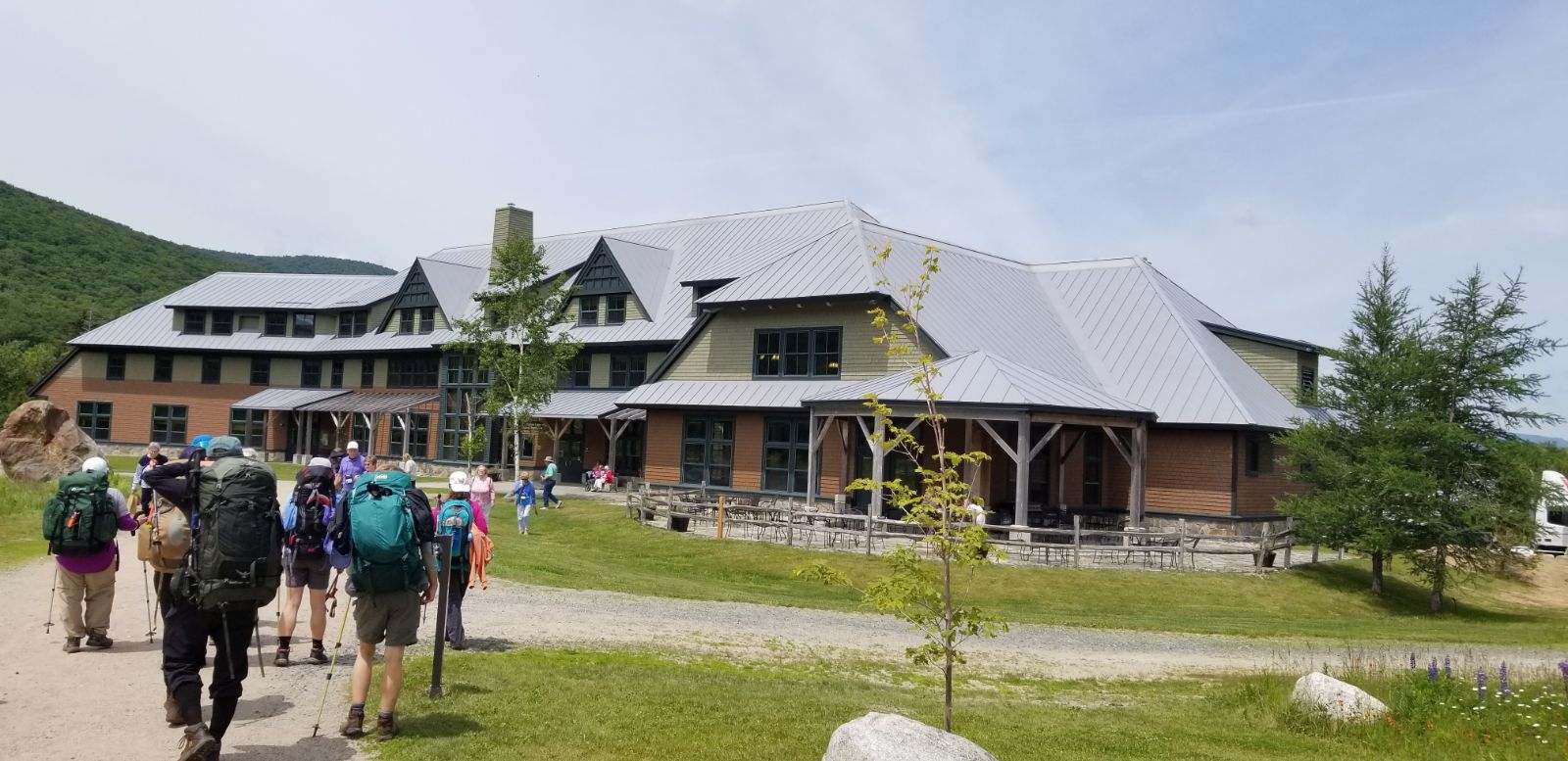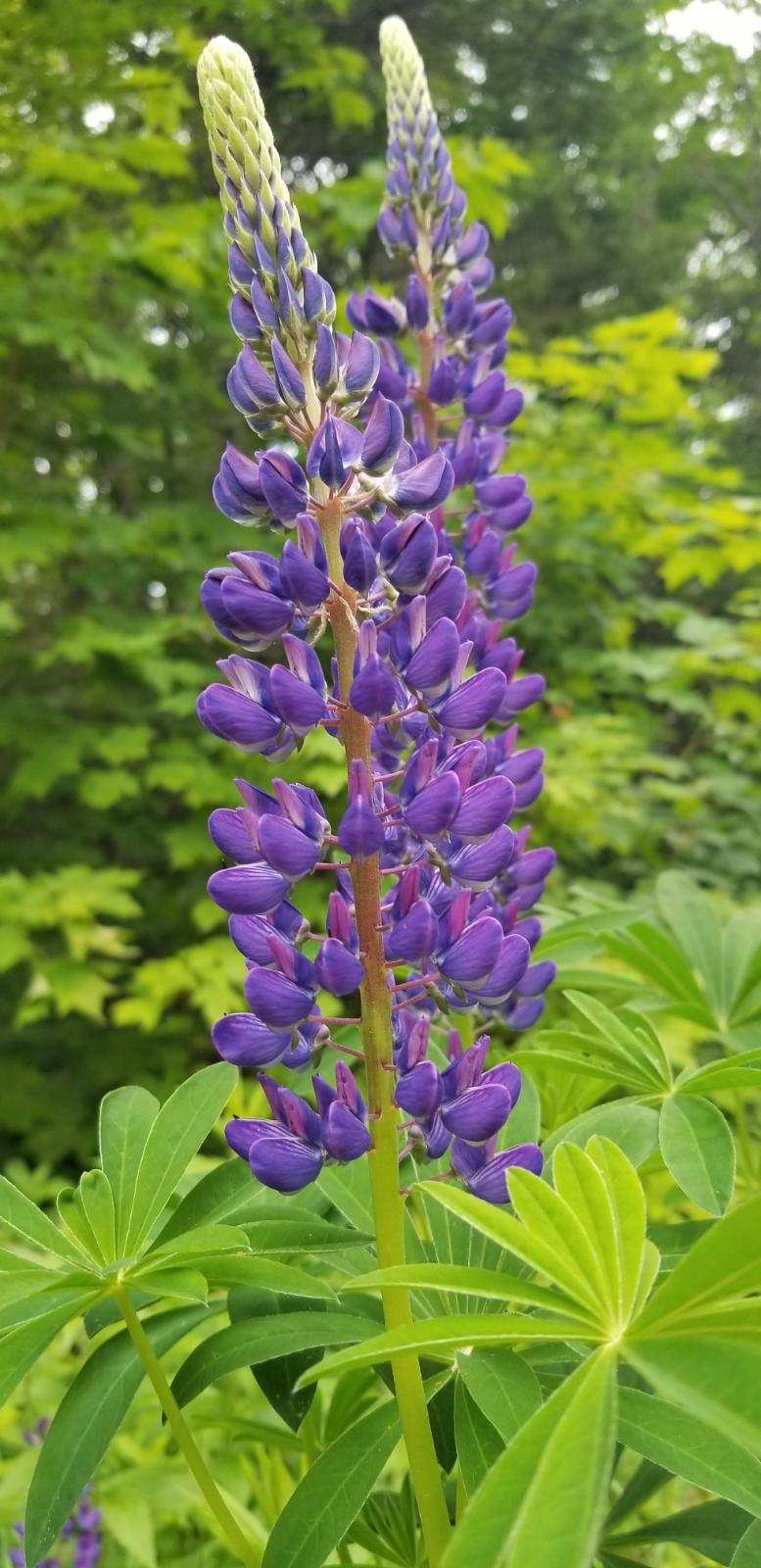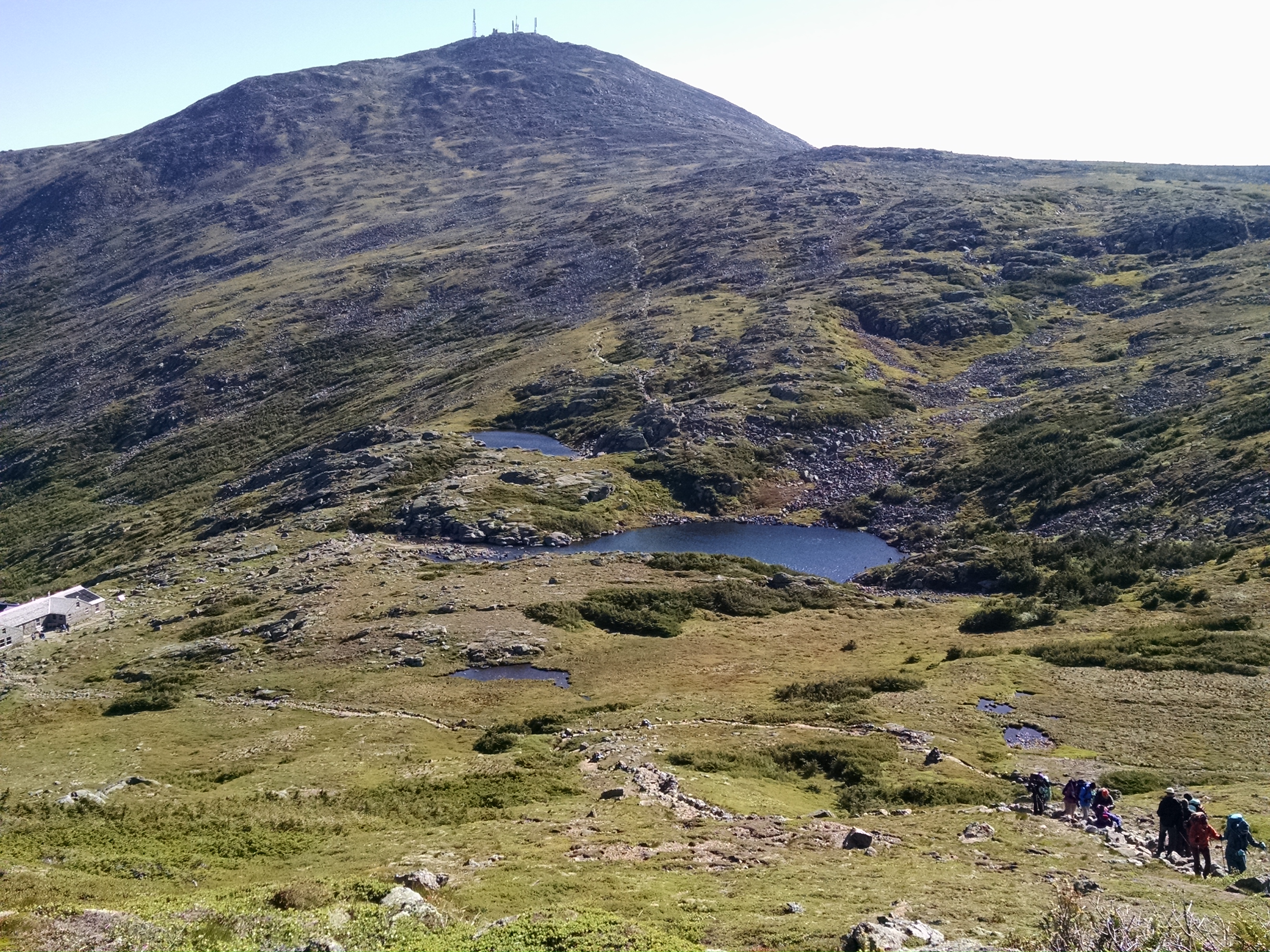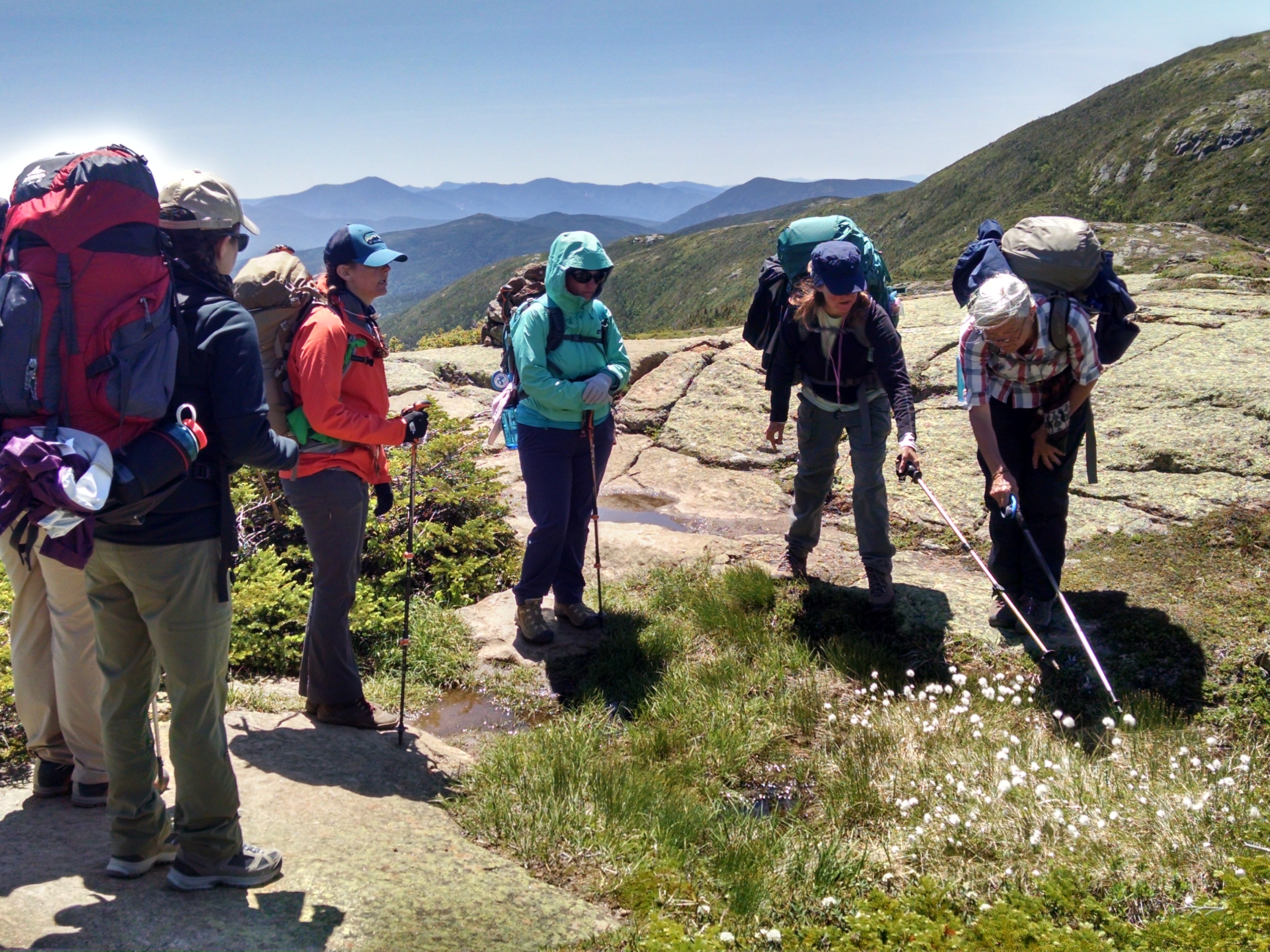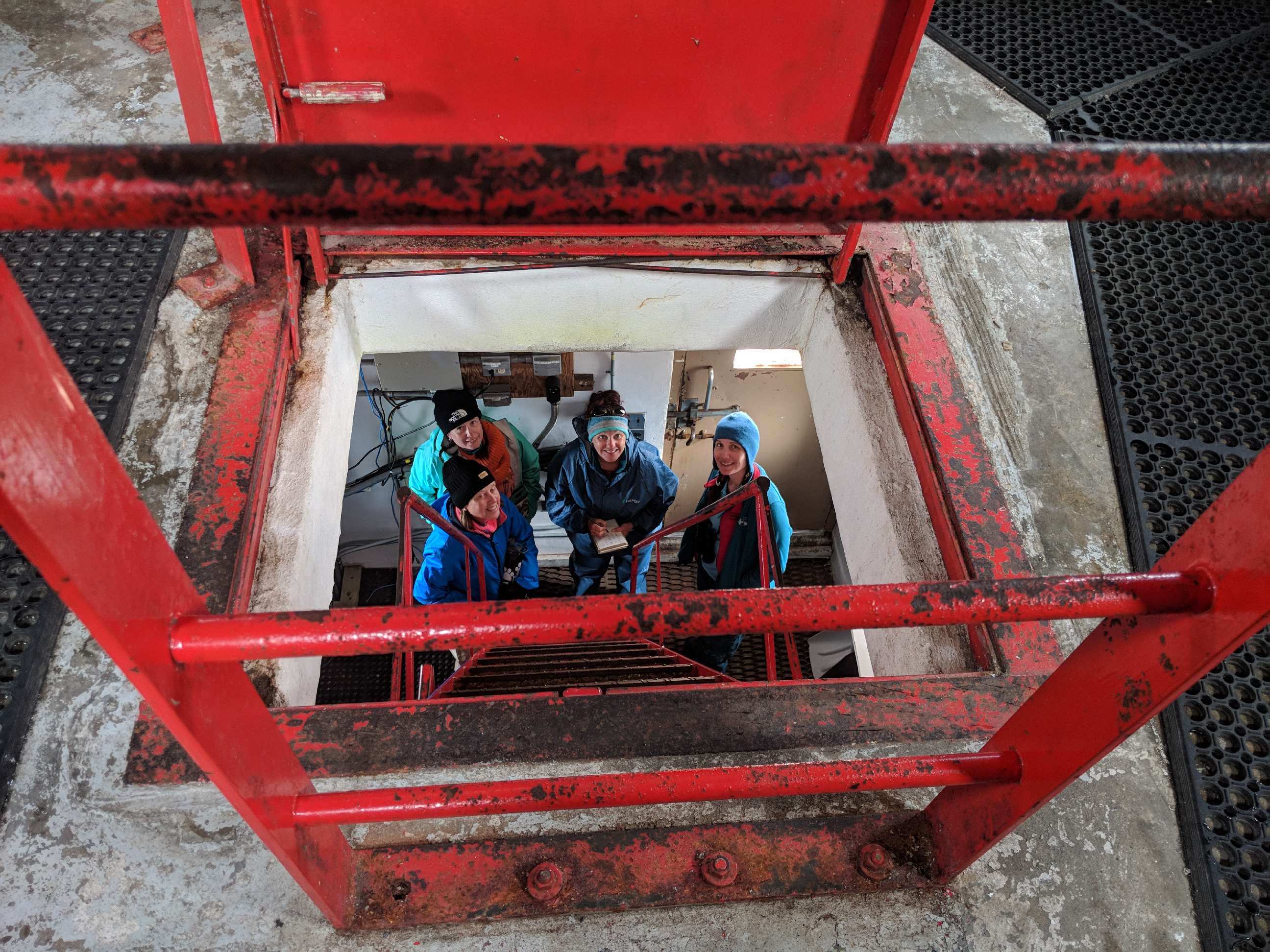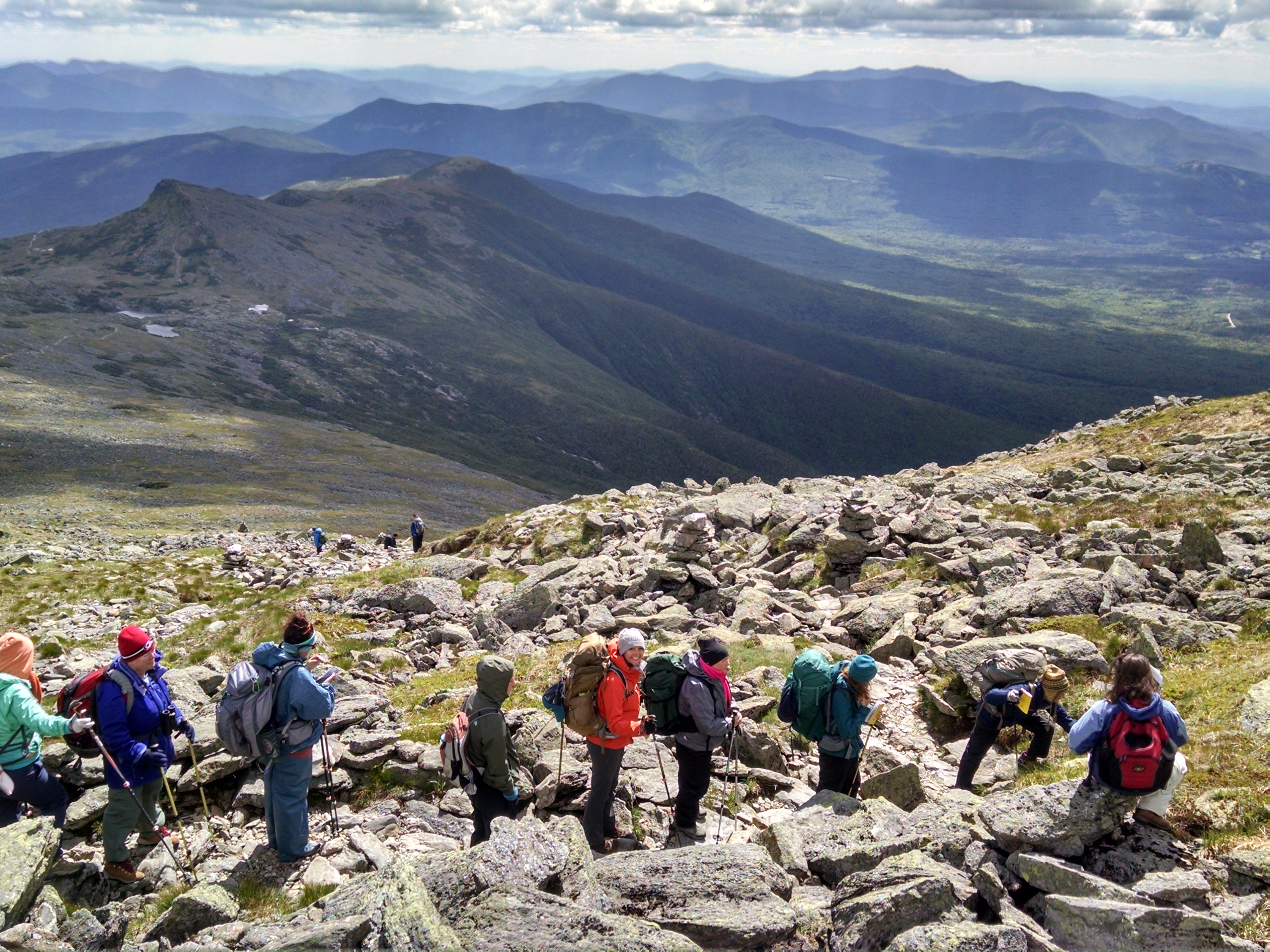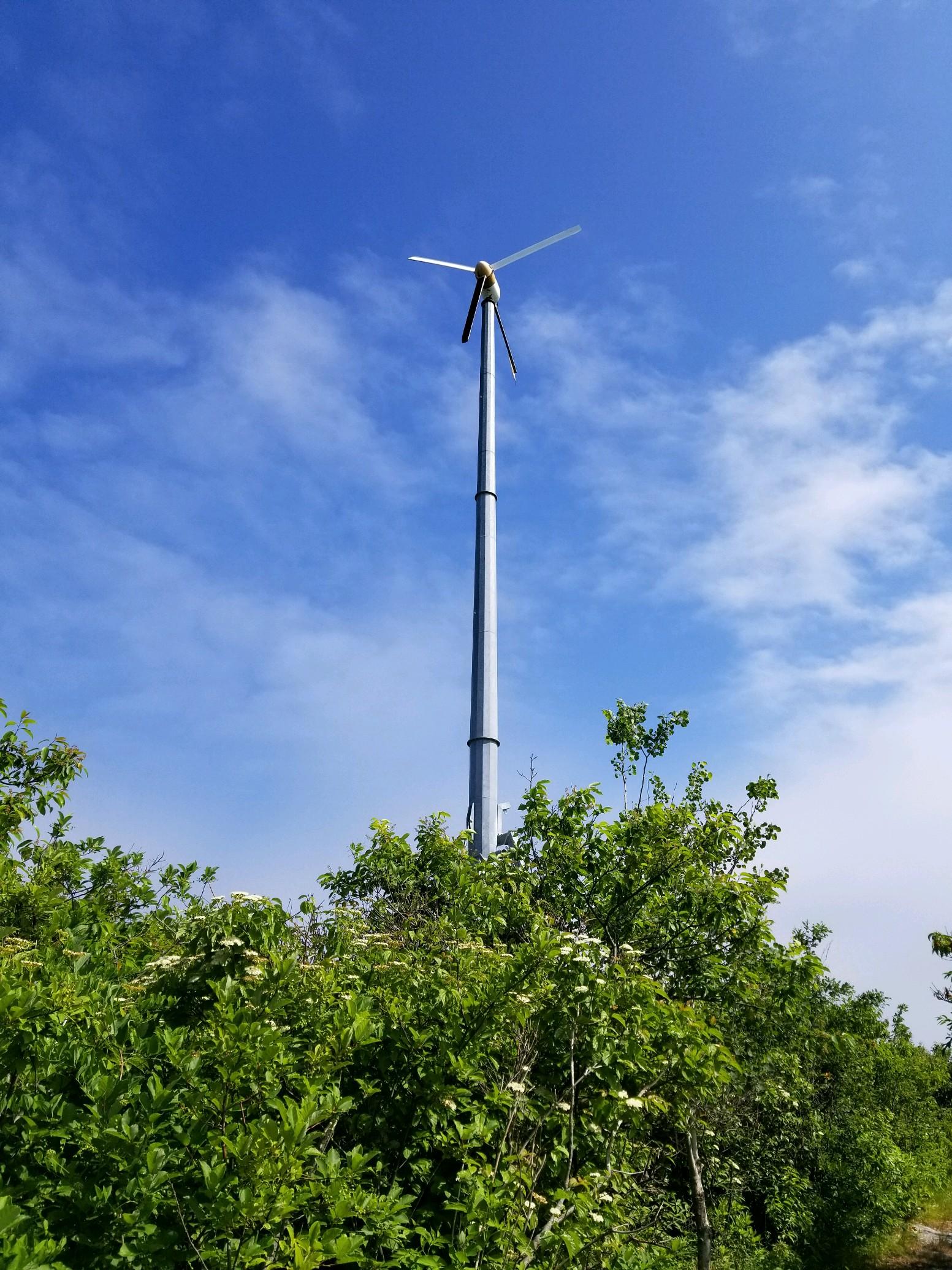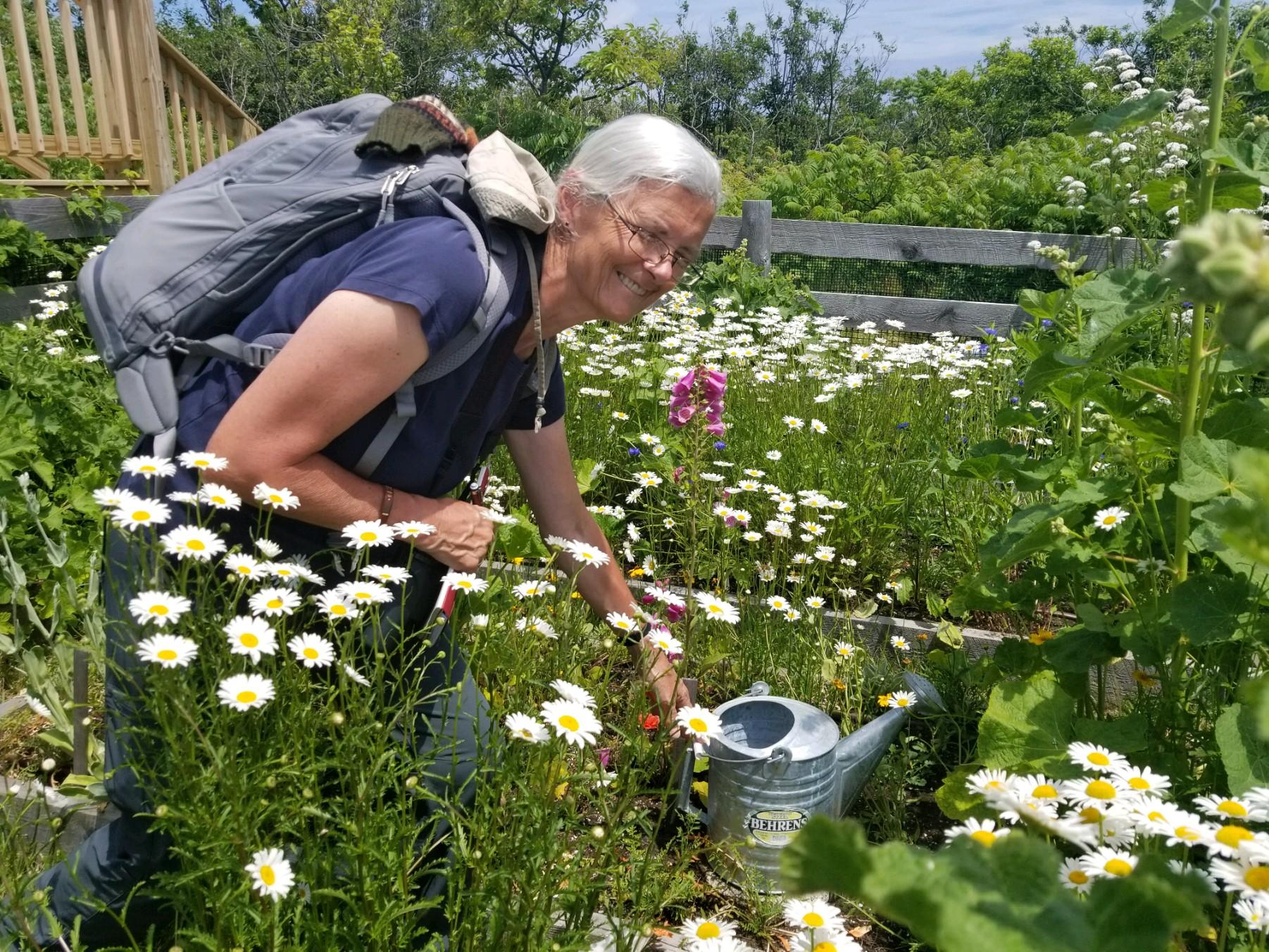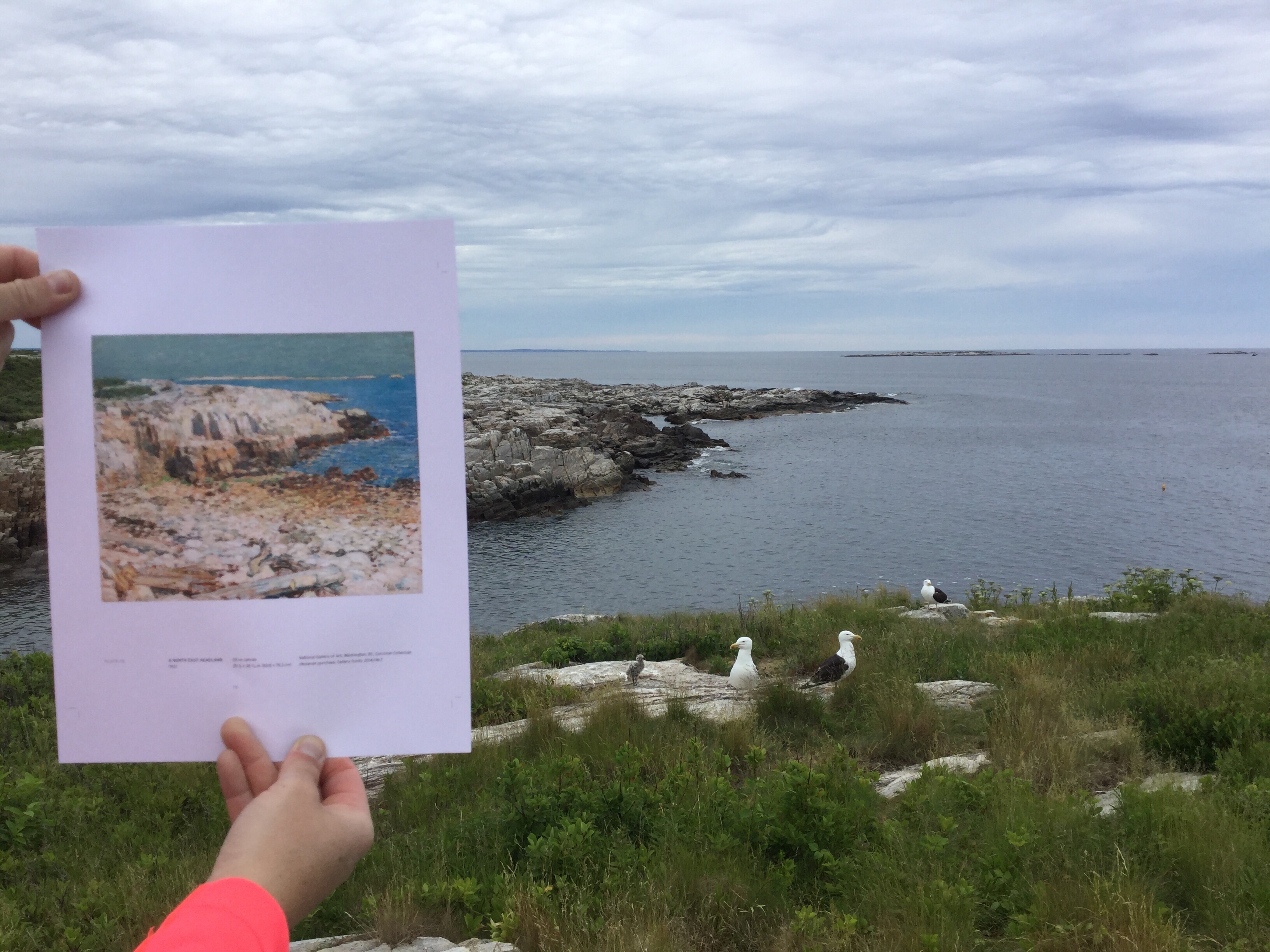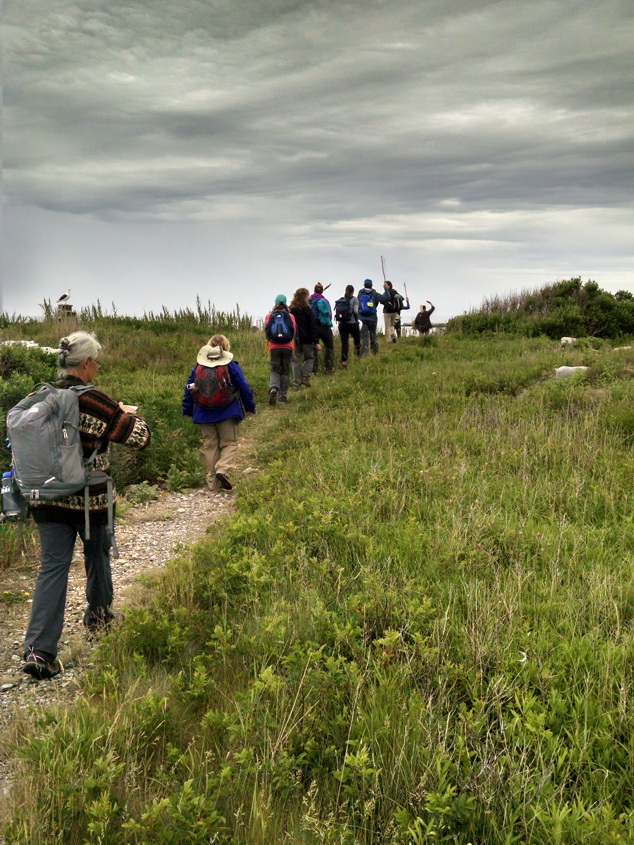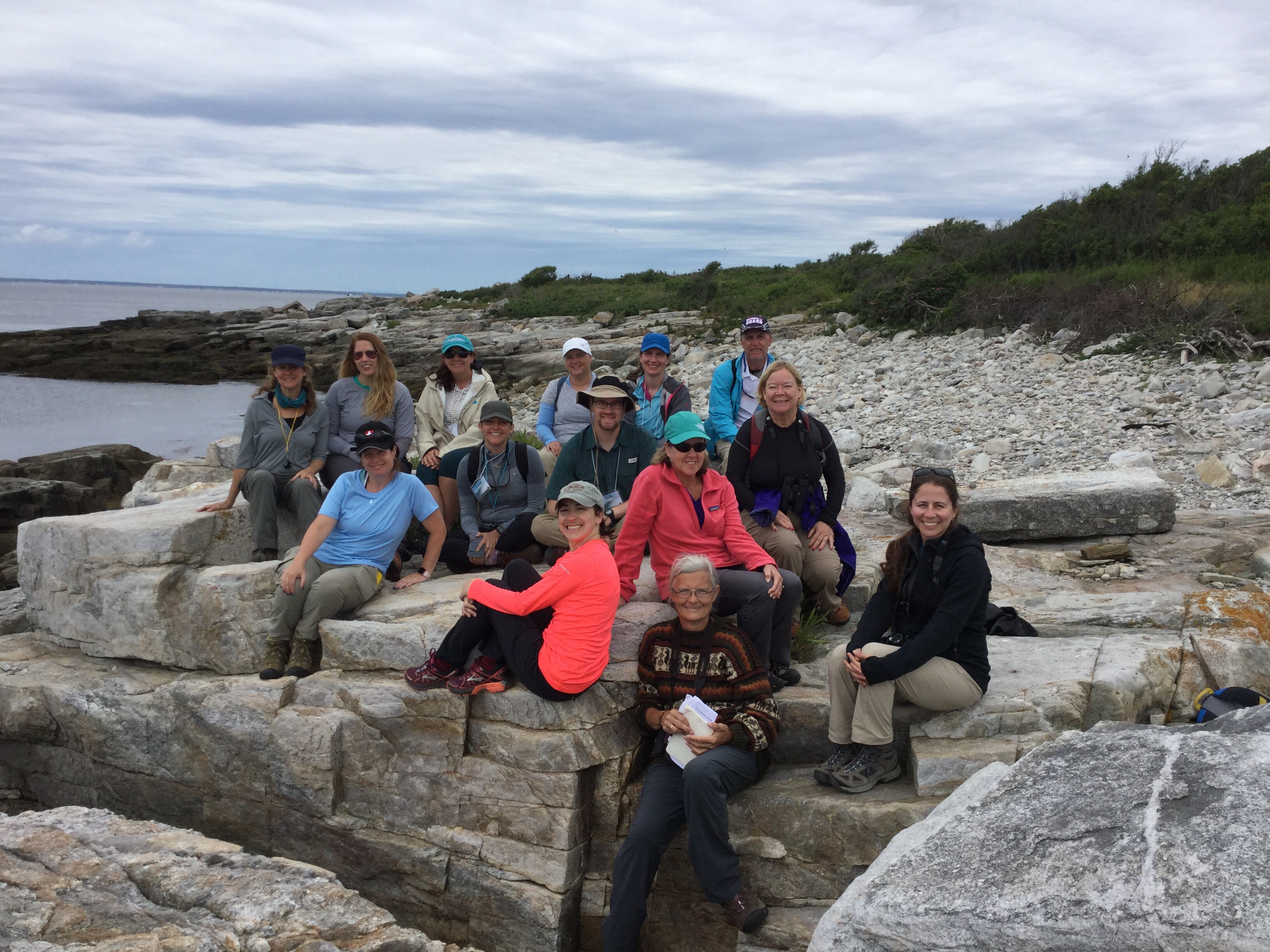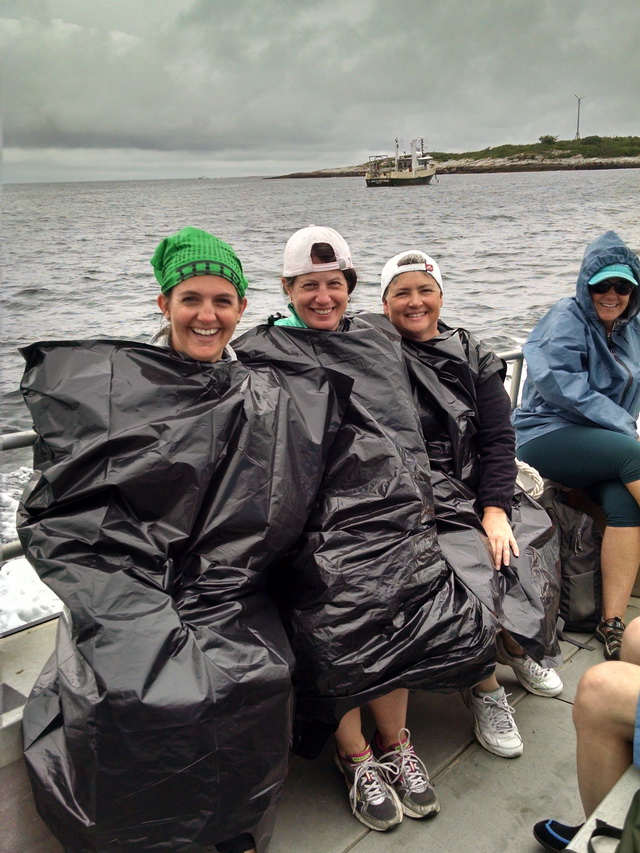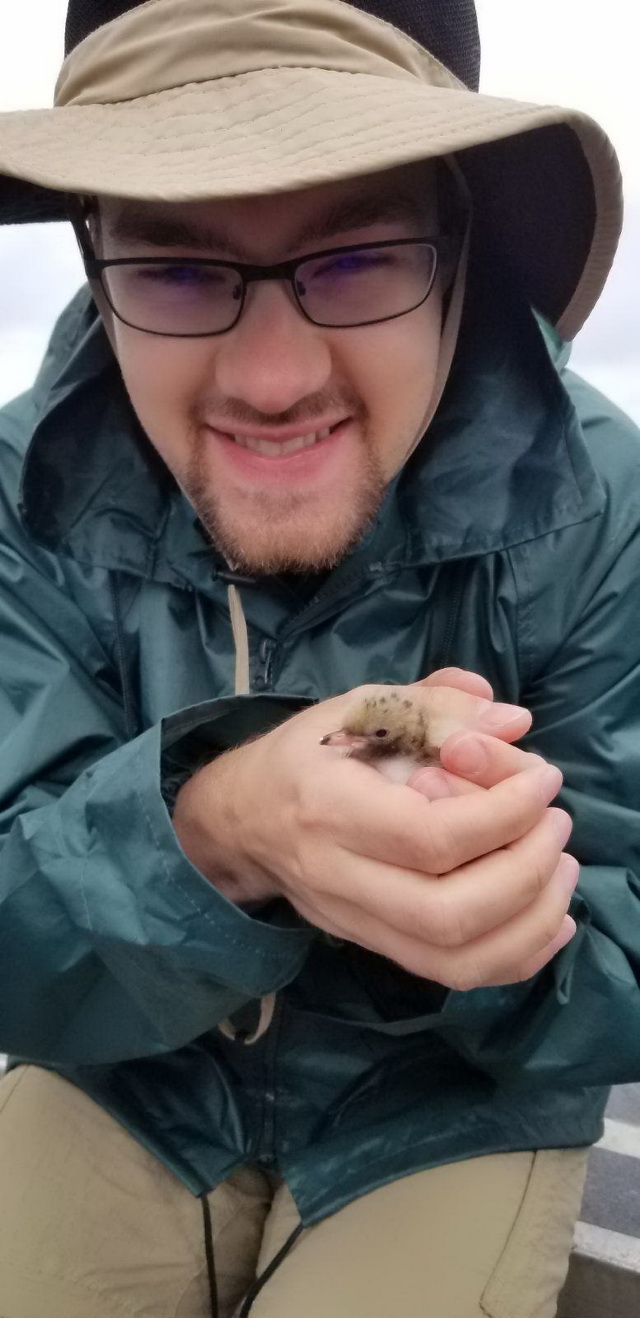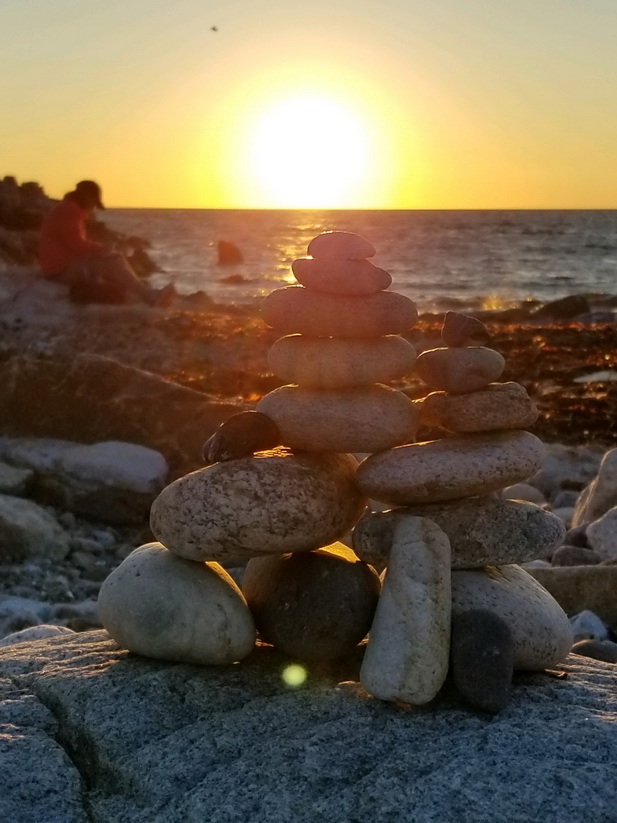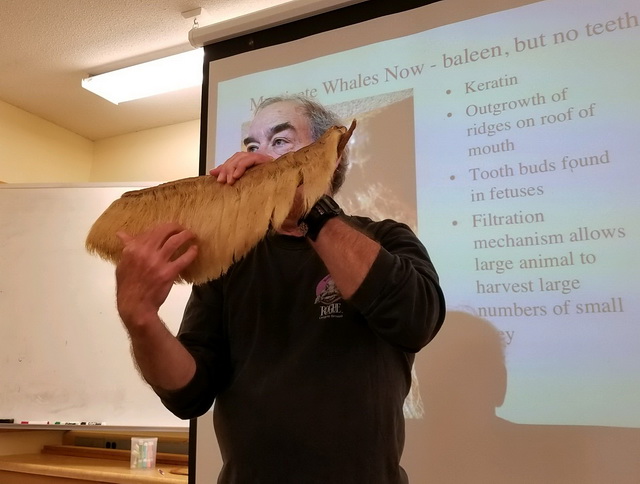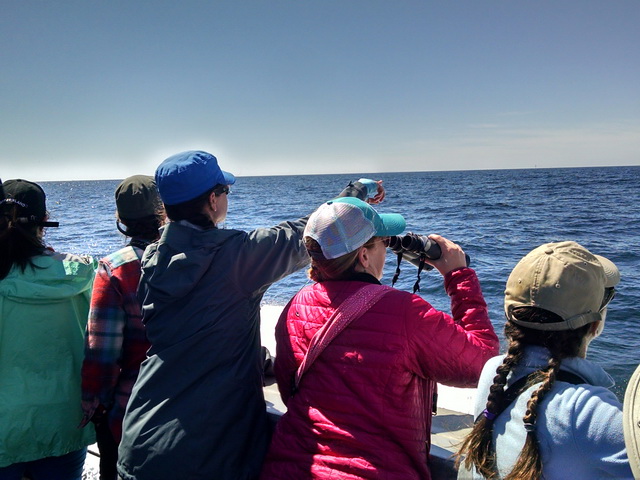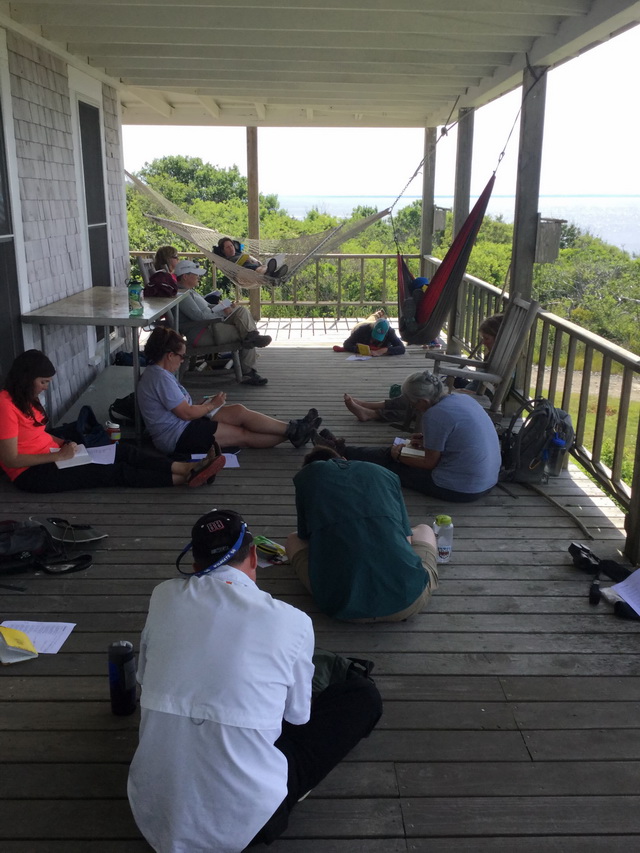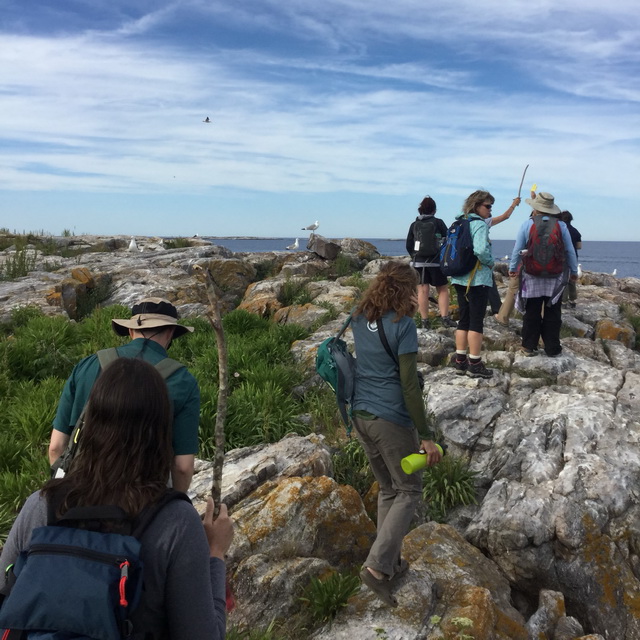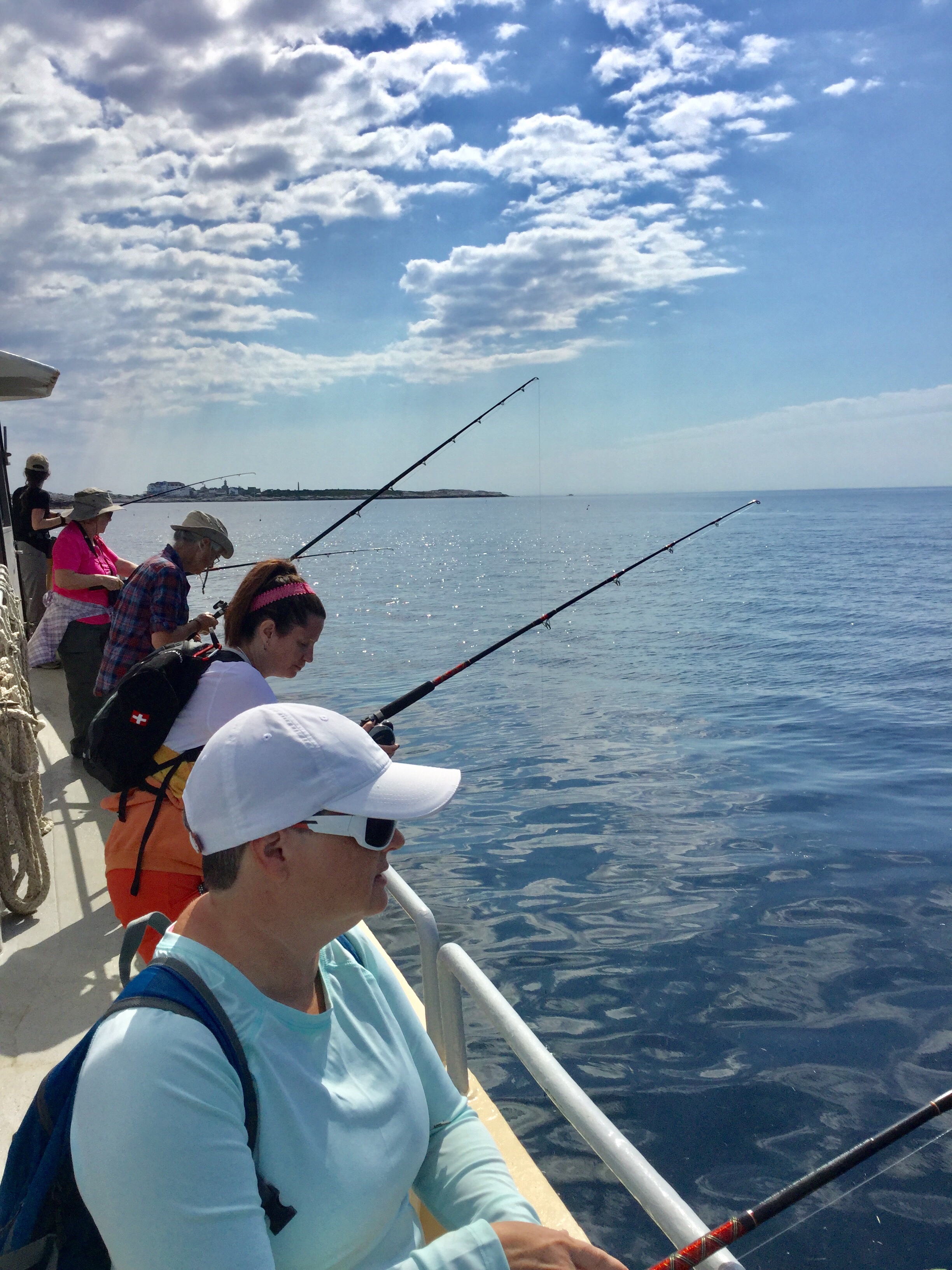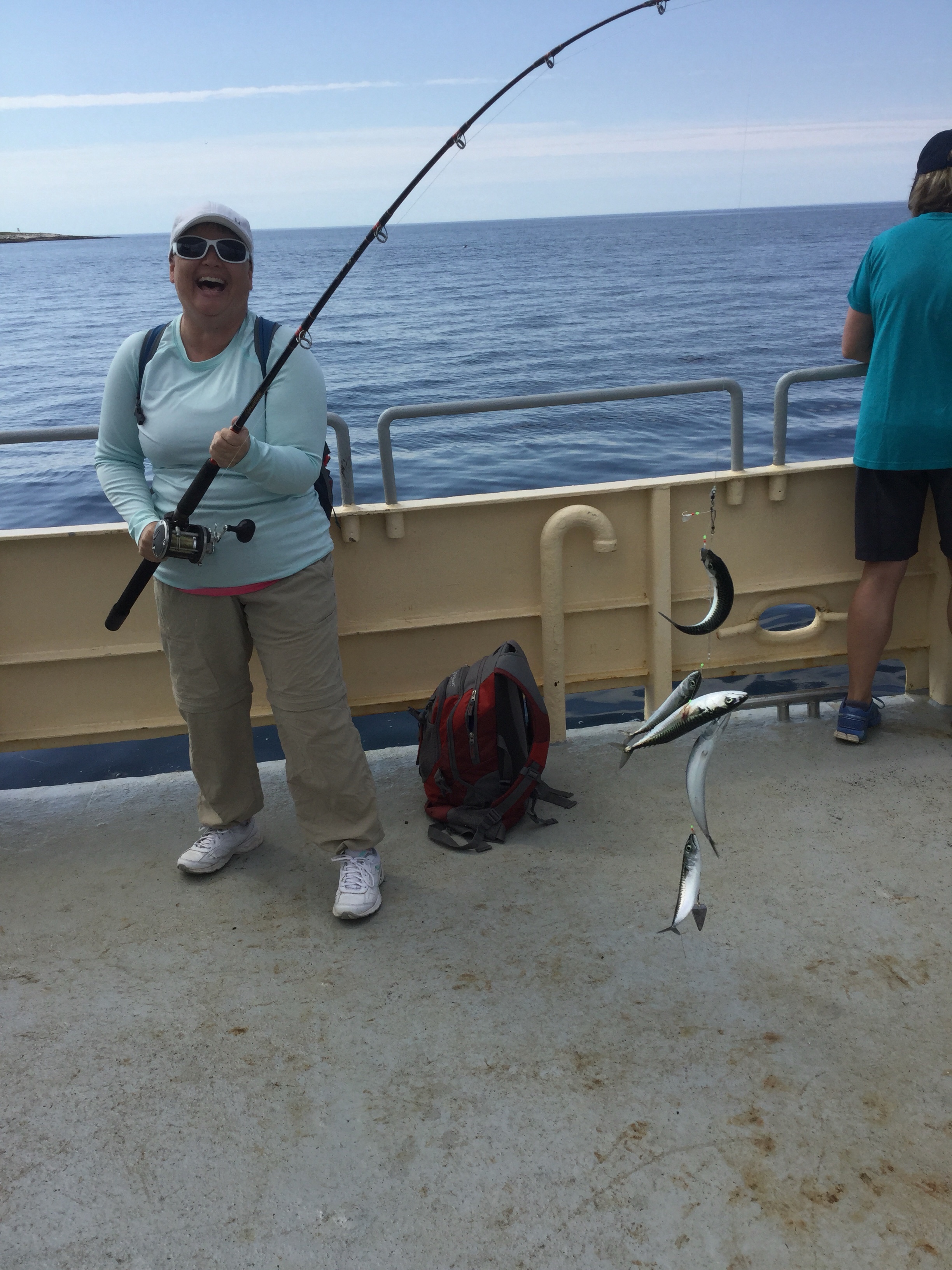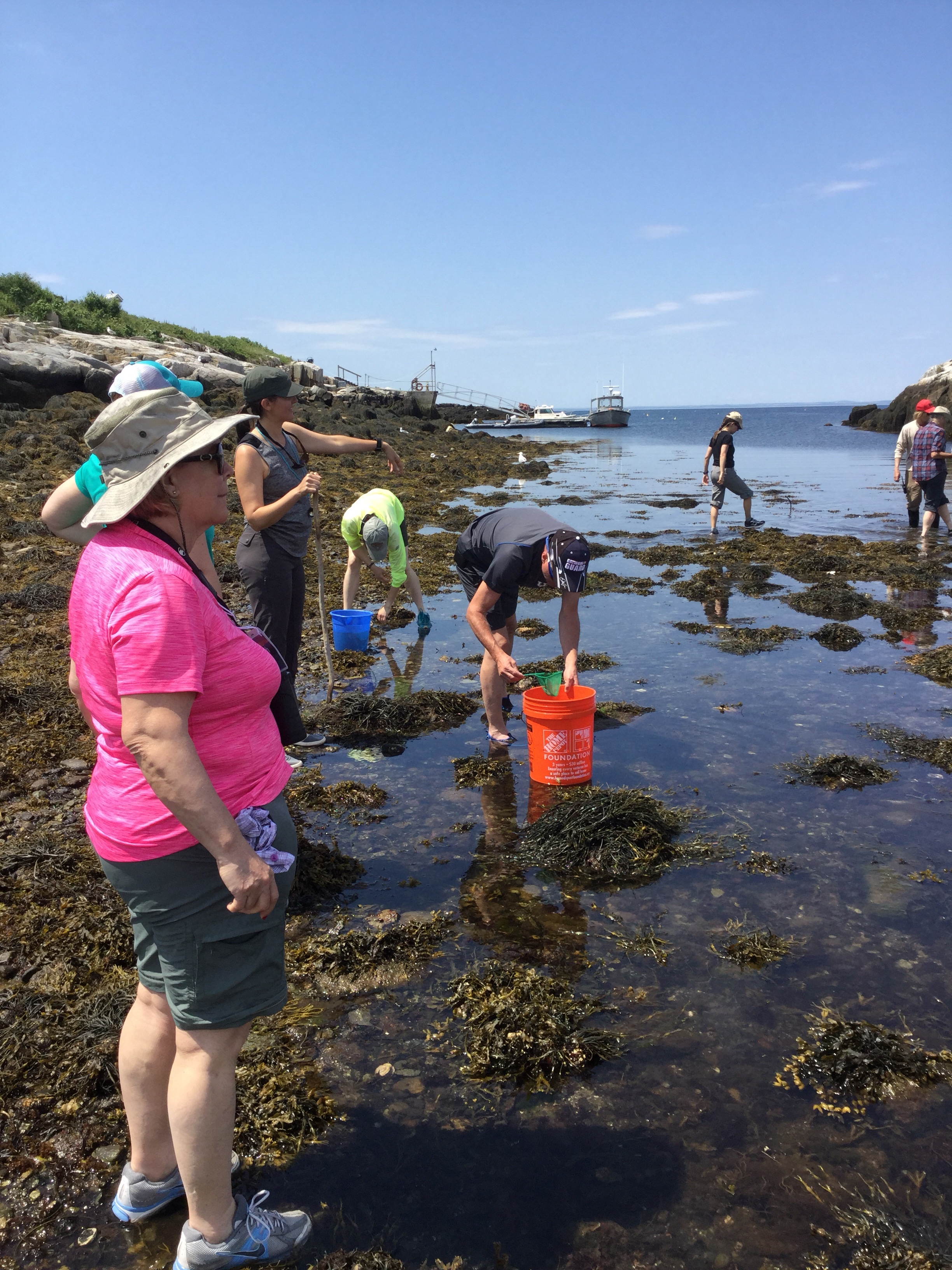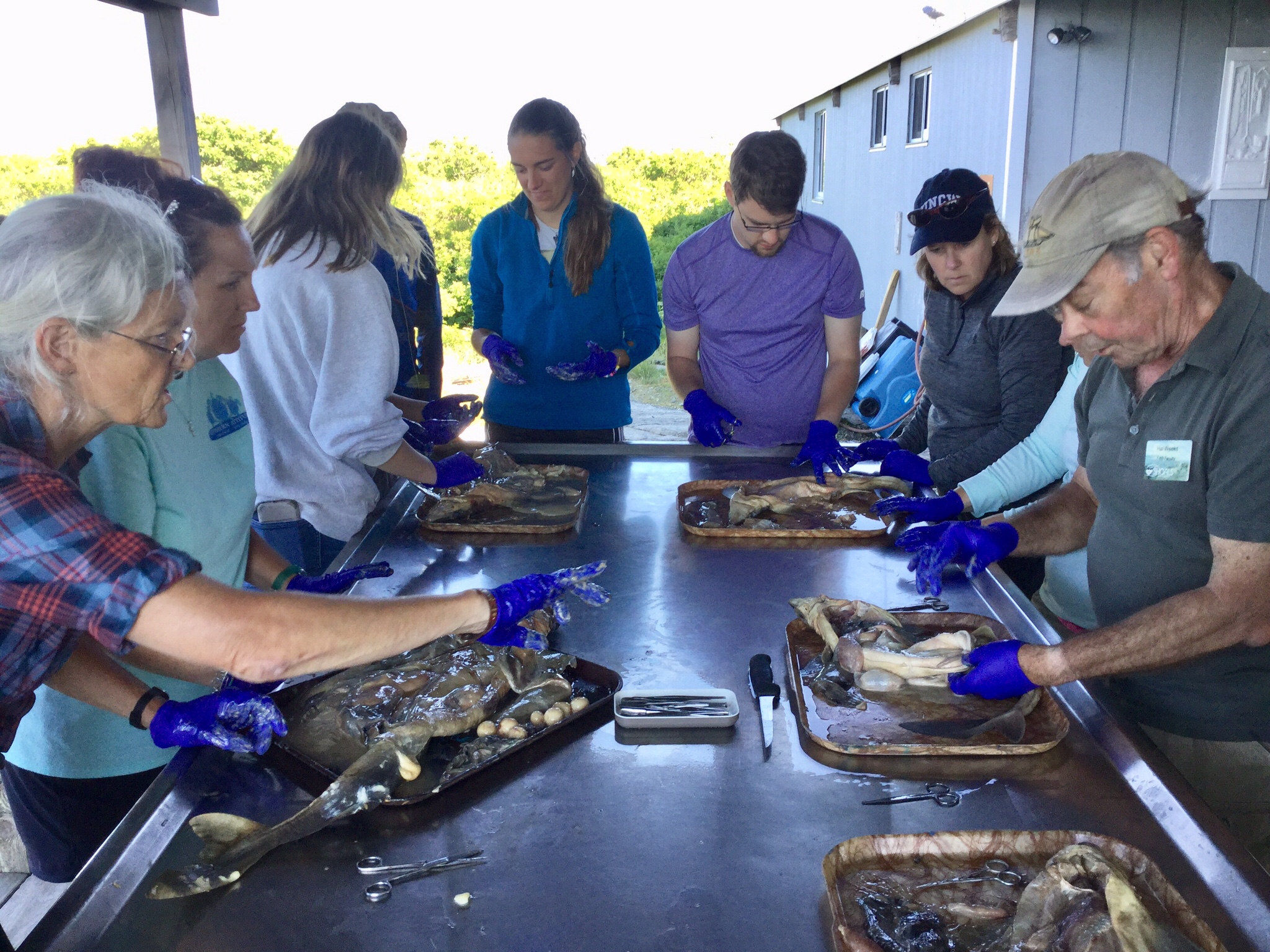“The end. The beginning.”
June 29, 2018 - Comments Off on The end. The beginning.
Today is the end — the end of our time together in Maine and New Hampshire. The end of our time experiencing these wild landscapes. The end of sharing our daily experiences with each other. The end of achy feet and sore muscles and smelly clothes. The end of our Educators of Excellence Institute to New England. But, as the saying goes, every end is a new beginning. The beginning of our memories. The beginning of our planning and collaborations. The beginning of our lifelong friendships. The beginning of sharing our stories and pictures and inspirations with our students and friends and families. We are excited for what lies ahead.
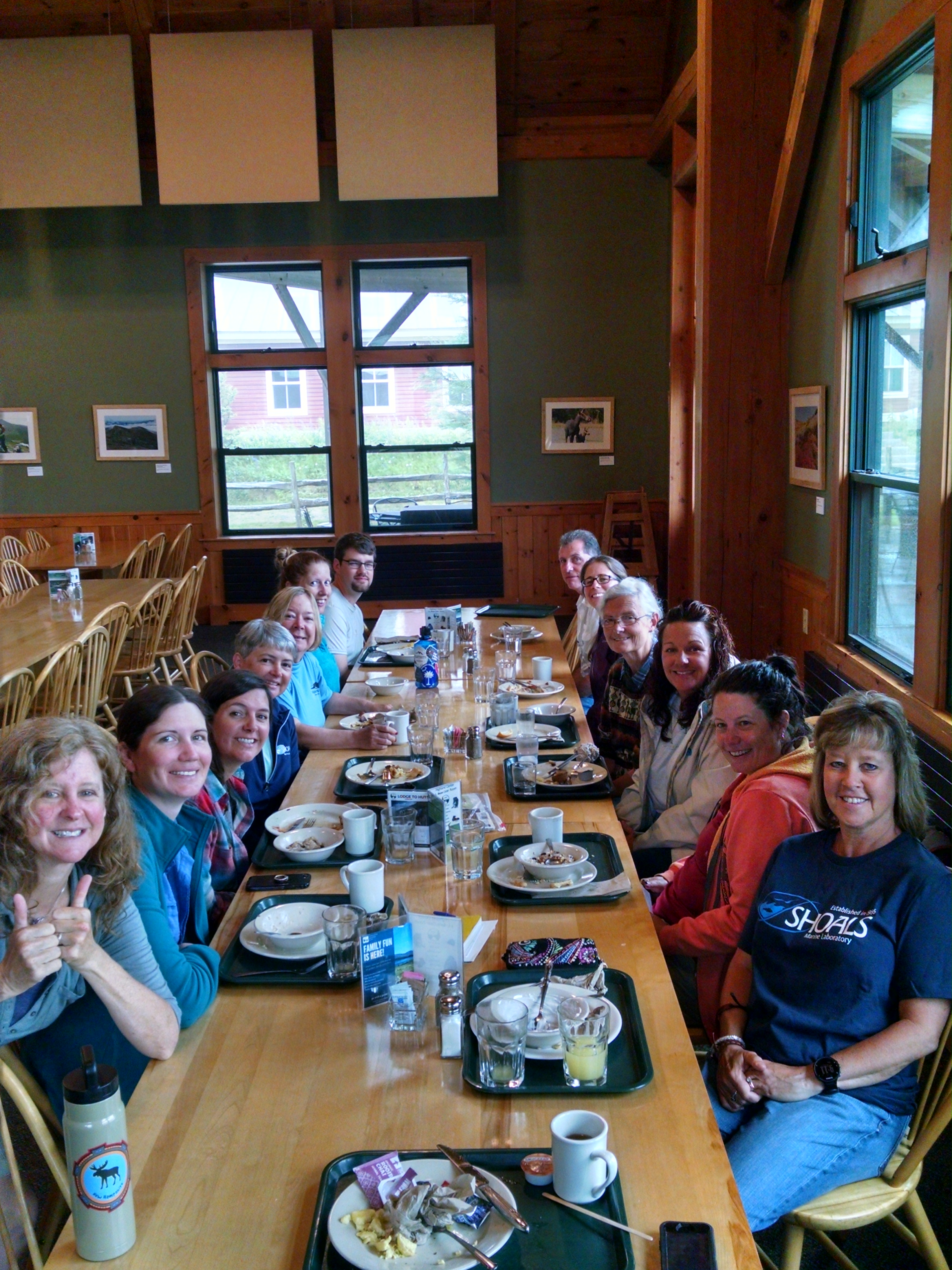
Grateful to be enjoying our big breakfast together as the rain pours down outside.
As the rain poured down outside (and we all expressed deep gratitude that we made it off the trail before this weather system moved into the area!), we gathered for a well-deserved, hearty breakfast at the AMC Highland Center. We didn’t have to rush our eating in order to have time to stuff everything in our packs and lace up our boots for another long hike. This morning was different. This morning as we gathered together we could take our time — time to reflect on what we will take away from this trip and how we will use these experiences in our classrooms. It was inspiring to be able to brainstorm and share our knowledge with one another, and to see creative sparks fly among so many passionate educators all in one room. How bittersweet it was, knowing that this would be the last time (until our reunion in November) that our “trail family” would all sit in a circle, sharing time together.
On our way to the airport, we shared our last meal at the Gypsy Cafe where we talked about our regrets and our appreciations. It’s important to verbalize the things we may have regrets about, to acknowledge them so we can leave them behind and move forward in positivity — maybe we wished we looked at our watches or phones a little bit less, or journaled a little bit more. Our few regrets were drowned out by waves of appreciations for each other — lots of stories of kind words, smiles, and the ready laughter that were so abundant on our trip. We feel proud of ourselves for taking risks to try new things, for being brave in difficult situations, and for the commitment we make to translate these experiences and places into opportunities for our students (and colleagues) at home. We also shared how we feel connected to this land, and invigorated by time spent in wild places. It is our hope that we can continue our adventures back home in NC and be the guides for the next generation of environmentally literate citizens, helping them to feel connected to, and compassion for, the natural world.
Our task regarding creativity is to help children climb their own mountains, as high as possible. No one can do more.
~Loris Malaguzzi

Remember that time we all piled in one car to sit on the side of the road watching a moose and her baby?
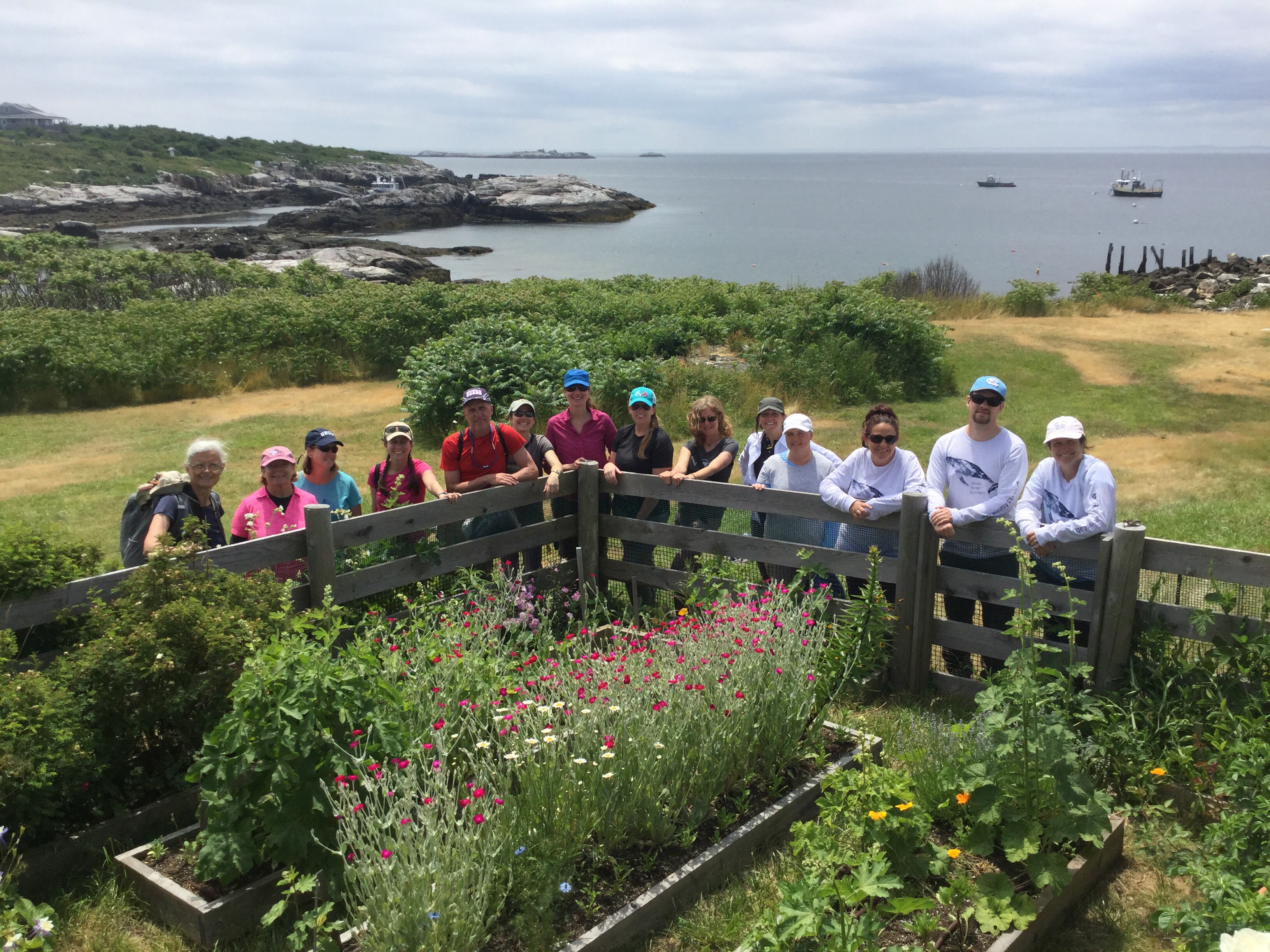
The fabulous educators of the New England Institute- view from Celia Thaxter’s garden on Appledore Island, ME.

